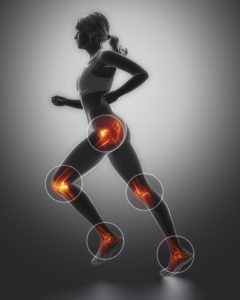 Joint Pain is common, but it’s not well understood. It is in fact not a single disease; it’s a term used to refer to all sorts of pain in joints from osteoarthritis. There are over a hundred types of different joint pain related conditions. It’s most common among women, and it occurs more frequently as you get older. People of all races, sexes and ages can have joint pain or osteoarthritis.
Joint Pain is common, but it’s not well understood. It is in fact not a single disease; it’s a term used to refer to all sorts of pain in joints from osteoarthritis. There are over a hundred types of different joint pain related conditions. It’s most common among women, and it occurs more frequently as you get older. People of all races, sexes and ages can have joint pain or osteoarthritis.
Symptoms of Joint Pain
The symptoms of common joint paint include decreased range of motion (ROM), stiffness, pain and swelling. These symptoms might come and go, and they can be severe, moderate or mild. They can stay about the same for many years, but they can progress or worsen over time.
Severe joint pain can lead to an inability to do day-to-day activities and chronic pain can make it hard to do activities climb or walk stairs. Joint pain can lead to permanent changes. The changes may be visible, like knobby finger joints, but usually, the damage will only be viewed on X-ray. Also, some types of joint pain can affect your skin, kidneys, lungs, eyes and heart.
How Do You Prevent Joint Pan?
There’s no sure way of preventing joint pain. However, you can help to reduce your risk of osetoarthritis and delay the possible onset of some types of other types of joint pain. If you’ve healthy joints, do everything you can to ensure that you maintain mobility and function. This will help you avoid the pain and disability.
Risk Factors
The types of joint pain plus related condition all have risk factors, circumstances associated with the disease, behaviours and individual features.
Non-Modifiable Risk Factors
There are risk factors that aren’t modifiable, meaning that you cannot do anything about them. If you have a family history of osteoarthritis or you are a female, you are more likely to get certain types of joint pain.
Modifiable Risk Factors
On the contrary, some risk factors are regarded as modifiable. They are the circumstances and behaviours you can change to delay onset, reduce your risk or completely prevent joint pain and swelling. The following are some examples of osteoarthritis and related diseases plus associated modifiable risk factors:
• Gout – Eat a healthy diet that is low in sugar, purines and alcohol.
• Rheumatoid arthritis – Don’t smoke.
• Osteoarthritis (OA) – You should maintain a healthy weight.
In some cases, when you reduce a prior incident, it can significantly reduce your risk of joint pain and osetoarthritis. Also, avoiding sports injuries through safe play, adequate training and proper equipment can prevent anterior cruciate ligament (ACL) tears that may result in OA several decades later or in a few years.
Hope for Prevention
Right now, because scientists do not fully understand the mechanisms and causes of these diseases, true prevention appears to be impossible. However, there’s real hope that someday all or some types of joint pain and osteoarthritis plus related conditions will be prevented. The breakthroughs are closer than they seem.
It’s believed that many types of osteoarthritis are caused by a mixture of genetic predisposition plus an environmental trigger, like toxin and virus. Discovering the trigger for a certain type of joint pain could be the answer to its prevention, even if you have a genetic risk.








